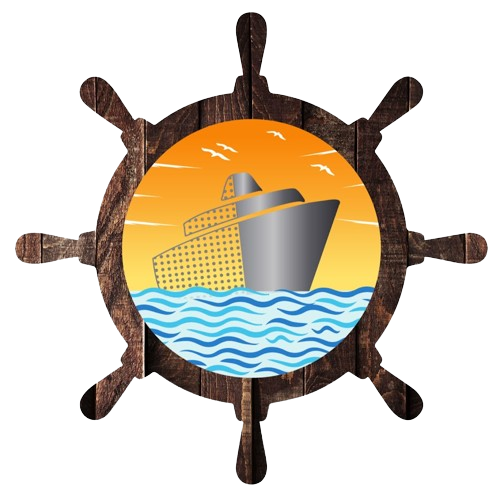What is Dredging?
Dredging involves removing materials like mud minerals and other sediments from underwater areas to maintain waterways, prevent flooding, or create new land.
This process clears sediments accumulating in the sea bed and obstructs or restricts water flow in natural or man-made channels.
Vessels require a certain amount of depth to sail easily, so the sea bed is cleared by dredging.
The process of excavating sediments from water bodies is called dredging.
What is a dredging machine?
A dredging machine is a specialized tool that is made for extracting sediment, mud, sludge, or sand from water bodies like rivers, lakes, and coastal regions.
A dredging machine is a highly specialized piece of equipment used to remove sediment, or other materials from the bottoms of water bodies such as rivers, lakes, harbors, and oceans.
These machines are essential for maintaining waterway depths, enabling navigation, preventing flooding, and making land for construction or agricultural purposes.
What are the different types of dredging machines?
1. Cutter Suction Dredgers (CSDs):
A cutter suction dredger (CSD) is a hydraulic machine that removes sediments and debris from oceans, seas, and other water bodies using a rotating cutter head and suction pipes
The cutter head is used to break hard soil and rock into fragments, which are then sucked up by the suction pipes and transported to the surface. The CSD stays in place during dredging by lowering a spud into the seabed and using anchors and winches to move it back and forth.
CSDs are used to dredge silt, sand, clay, and rock from lakes, rivers, harbors, and other waterways
2. Trailing Suction Hopper Dredgers (TSHDs):
These machines have suction pipes with drag heads that collect materials from the seabed and store them in an onboard hopper for transportation.
A trailing suction hopper dredger (TSHD) is a self-propelled ship that uses powerful pumps to remove sediment from the seabed and transport it to a designated location.
TSHDs are used for a variety of dredging projects, including: Deepening and maintaining waterways, Land reclamation, Port construction, Mining, and Supplying marine aggregates.
3. Bucket Dredgers:
Bucket dredgers use a group of buckets fixed on a chain to scoop up sediment from the seabed.
Bucket dredgers have a large limit in their physical size.
The balance between size and output for bucket dredgers reached perfection in the 1920s. After which no larger buckets were made.
4. Backhoe Dredgers:
These dredgers are similar to land-based excavators, these machines use a backhoe arm to dig up material in shallow areas.
They are stationary dredgers with hydraulic excavators installed on a pontoon.
Backhoe dredgers can dredge a wide range of materials very precisely and are operated in shallow and enclosed waters.
5. Hydraulic Dredgers:
These machines use water pressure to dislodge and transport materials through pipelines.
Hydraulic dredgers are machines that use water to move, transport, and excavate materials from the bottom of bodies of water. They are versatile and efficient and can be used for a variety of applications, such as environmental restoration and maintaining navigation channels.
What are the benefits of Dredging?
1. Waterway Project Preparation
Dredging is fundamental in preparing waterway projects and in many underwater constructions.
Dredging clears sediments from channels, harbors, and other water bodies and creates a pathway for building bridges, docks, and undersea tunnels. This process ensures that these structures are constructed on a stable foundation, promoting safe navigation and supporting efficient transportation of goods and people.
2. Land Reclamation
Dredging is essential for land reclamation projects. The sediment removed during dredging is often used as a valuable resource for construction and urban development.
The materials extracted are dried and transported to areas where additional land or building materials are required.
This process not only generates more usable space but also supports infrastructure development.
3. Environmental Cleanup
Dredging also plays a key role in environmental cleanup efforts. While not all dredged materials are harmful, some sediments contain hazardous chemicals or pathogens.
In such cases, dredging is vital for removing these contaminants from the water, helping to protect aquatic ecosystems.
4. Aquatic Life Preservation
Dredging contributes significantly to the preservation of aquatic life. By removing harmful substances from water bodies, dredging improves water quality and creates healthier ecosystems for marine and freshwater species.
This process also supports the restoration of fish spawning grounds.
5. Cleanup Applications
Dredging is frequently utilized for cleanup purposes, particularly in response to environmental emergencies such as chemical spills, sewage overflows, or natural disasters.
Dredging efficiently removes debris, contaminants, and waste that can be threatening water supplies and ecosystems.
Dredging cleanup applications help protect public health, rehabilitate damaged environments, and prevent ecological harm.
What Is the Method for Dredging?
Various methods are used for dredging, depending on the project requirements.
Some of the common dredging methods are as follows:
- Mechanical Dredging:
Mechanical dredging is a process that uses heavy machinery to dig up and move the bottom of the water body.
It’s often used in deeper bodies of water and can involve the use of a backhoe, dragline, or other large machinery.
Heavy equipment like excavators or cranes is used to scoop up sediments, mud, and other materials. This method is effective for digging up hard sediment.
- Hydraulic Dredging:
Hydraulic dredgers are versatile and efficient equipment used to excavate, transport, and deposit sediments, and debris from the bottom of water bodies.
The dredging process utilizes the force of water to properly loosen and transport materials easily
This makes it an effective method for various applications such as maintaining navigation channels for environmental restoration projects.
- Specialized Methods:
Other methods such as pneumatic dredging and environmental dredging, are used for specific projects where environmental protection is required.
What are the harmful effects of Dredging?
Dredging is the removal of silt and mud from water bodies and is often undertaken to enhance navigation or extract sand and gravel for construction.
Unfortunately, it is not always cost-effective and may have limited success in reducing flood risks.
Dredging can significantly impact the environment, leading to:
- The soil deposits in any water body have a certain disposed composition. Through dredging this composition is removed.
- Due to the alterations, the existing habitat of creatures and organisms that rely on the soil’s original composition becomes unsuitable which leads to the extinction of these species.
- The alteration in the underwater soil composition changes the turbidity of the soil beneath the water. This leads to problems such as the emergence of new and harmful organisms, the transfer of unwanted organisms to other parts of the water body, causing wider contamination, and the release of excess and unwanted nutrients that disrupt organic processes. Additionally, the increased turbidity spreads existing contaminants further into the waterbody, negatively impacting the marine environment.
- Dredging polluted materials will cause harmful particles to disperse and spread over a larger area within the water body.
- Dredging loosens the soil, allowing substances previously bound to the contaminated deposits to disperse into the water and the soil that is not dredged.. If these substances include harmful organisms, they can significantly degrade the environment even after the dredging process.
What is the Need for Dredging?
- Dredging involves removing sediments and debris from the bottoms of lakes, rivers, harbors, and other water bodies.
- It is a routine activity required worldwide because sedimentation which is a natural process gradually accumulates in channels and harbors.
- The primary purpose of dredging is often to maintain or increase the depth of navigation channels ensuring that boats and ships can pass safely.
- Ships require adequate water depth to float without touching the bottom, and this requirement has grown over time as larger vessels are introduced.
- Since these massive ships transport most of the goods imported into the country, dredging plays a crucial role in supporting the economy.
- Dredging is also carried out to minimize the exposure of fish, wildlife, and humans to harmful contaminants and prevent these pollutants from spreading to other parts of the water body.
FAQs
Q1.What are the two main types of hydraulic dredging?
Ans: Pipeline and hopper dredges.
Q2.How is Dredging useful?
Ans: Dredging minimizes the exposure of fish, wildlife, and humans to harmful contaminants and prevents these pollutants from spreading to other parts of the water body.
Q3. What is the purpose of dredging?
Ans: Dredging is useful for clearing seabed for safe navigation and easy sailing of ships.
Disclaimer :- The opinions expressed in this article belong solely to the author and may not necessarily reflect those of Merchant Navy Decoded. We cannot guarantee the accuracy of the information provided and disclaim any responsibility for it. Data and visuals used are sourced from publicly available information and may not be authenticated by any regulatory body. Reviews and comments appearing on our blogs represent the opinions of individuals and do not necessarily reflect the views of Merchant Navy Decoded. We are not responsible for any loss or damage resulting from reliance on these reviews or comments.
Reproduction, copying, sharing, or use of the article or images in any form is strictly prohibited without prior permission from both the author and Merchant Navy Decoded.


